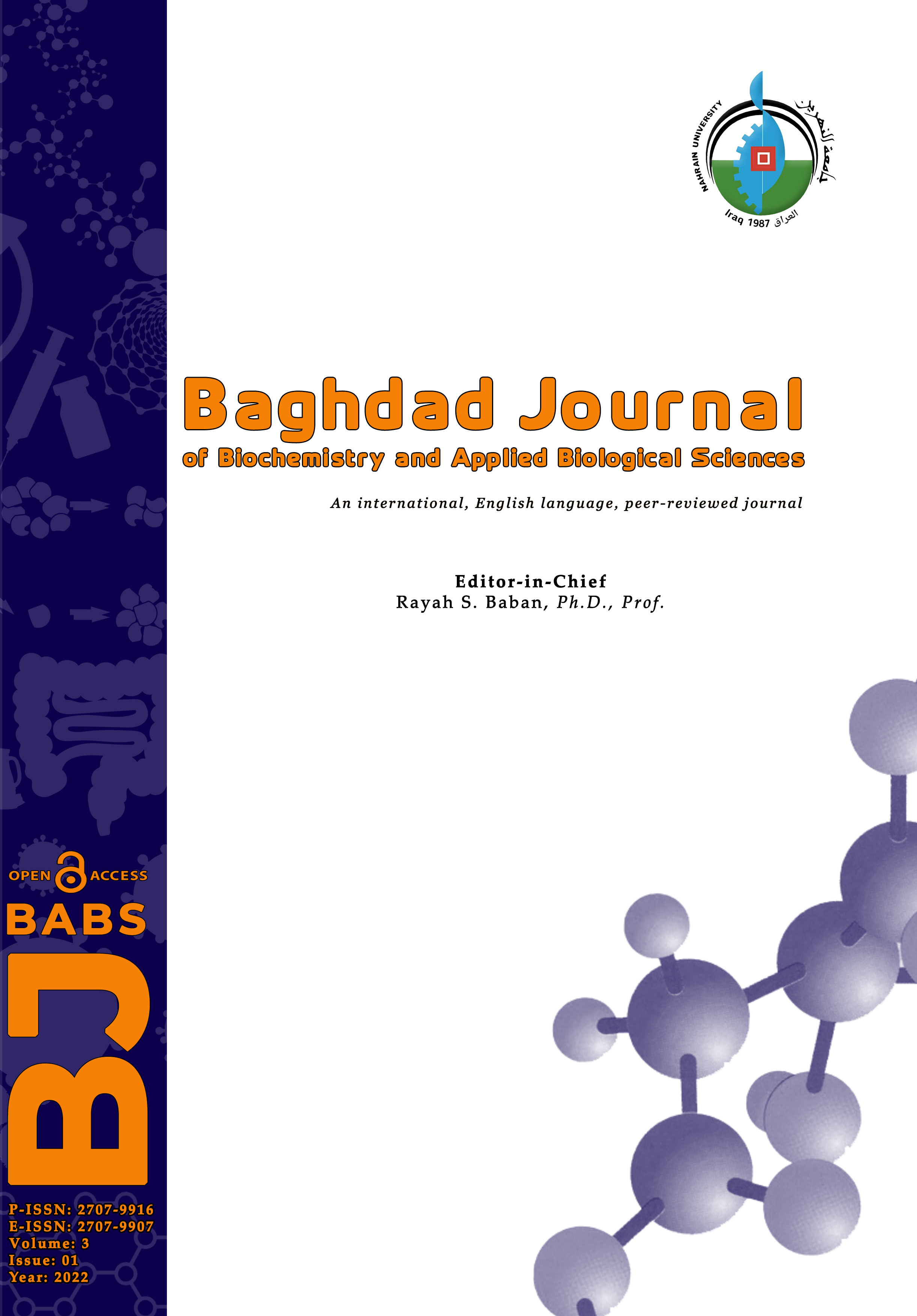Pre-analytical rejection rates of clinical samples based on patients’ health status
DOI:
https://doi.org/10.47419/bjbabs.v3i01.94Keywords:
emergency, inpatient, intensive care, outpatient, pre-analytical rejection ratesAbstract
Background and objective: The pre-analytical rejection rate is the proportion of samples rejected at the stage that includes the initial procedures of the testing process performed outside the laboratory walls by healthcare professionals. This study aimed to evaluate the pre-analytical rejection rate by considering the health status of the patients and the sample types and to examine the measures that can be taken against it.
Methods: The data of the samples that came to the laboratory for analysis for one year were included. These data were categorized according to sample types in complete blood count, biochemistry, hormones, urine, blood gases, coagulation, erythrocyte sedimentation rate (ESR), glycosylated hemoglobin (HbA1c). It was also categorized by emergency, outpatient, inpatient, and critically ill status. Considering the health status of the patients, the pre-analytical rejection rates determined in these sample types were compared.
Results: Complete blood count (0.40%) in emergency patients, HbA1c (0.78%) in outpatients, biochemistry (0.62%) in inpatients, hormones (0.29%), urine (6.19%) blood gases (1.03%), coagulation (1.26%), ESR (3.23%) in critical patients, sample types had the highest pre-analytical rejection rate.
Conclusions: The source of causes that affect pre-analytical rejection rates, such as hemolyzed sample, clotted sample, or insufficient sample, may be due to the patient's bed rest, critical or emergency. An underlying disease, treatment, or frequent phlebotomy may also be a factor. The source of the causes that affect the pre-analytical rejection rates, such as incorrect request, incorrect registration, and incorrect tube, can usually be attributed to non-laboratory healthcare personnel.
Metrics
Downloads
References
A Greinacher and K Selleng. “Thrombocytopenia in the intensive care unit patient”. Hematology Am Soc Hematol Educ Program 2010 (2010), pp. 135–143. DOI: 10.1182/asheducation-2010.1.135.
A M Simundic et al. “Managing hemolyzed samples in clinical laboratories”. Crit Rev Clin Lab Sci 57(1) (2020), pp. 1–21. DOI: 10.1080/10408363.2019.1664391.
C L’Acqua, S Bandyopadhyay, and R O Francis. “Red blood cell transfusion is associated with increased hemolysis and an acute phase response in a subset of critically ill children”. Am J Hematol 90(10) (2015), pp. 915–920. DOI: 10.1002/ajh.24119.
Dan Liu, Yan - Li, and Yi Huang. “The prevalence of hemolysis - a survey using hemolysis index”. Clinical Chemistry and Laboratory Medicine (CCLM) 55(4) (2017), pp. 90–91.
E A Hod, G M Brittenham, and G B Billote. “Transfusion of human volunteers with older, stored red blood cells produces extravascular hemolysis and circulating non-transferrin-bound iron”. Blood 118(25) (2011), pp. 6675–6682. DOI: 10.1182/blood-2011-08-371849.
G D Lundberg. “Acting on significant laboratory results”. JAMA 245(17) (1981), pp. 1762–1763. DOI: 10.1001/jama.1981.03310420052033.
G H Lyman and A A Khorana. “Cancer, clots and consensus: new understanding of an old problem”. J Clin Oncol 27(29) (2009), pp. 4821–4826. DOI: 10.1200/JCO.2009.22.3032.
G Lippi, J J Chance, and S Church. “Preanalytical quality improvement: from dream to reality”. Clin Chem Lab Med 49(7) (2011), pp. 1113–1126. DOI: 10.1515/CCLM.2011.600.
H L Corwin, K C Parsonnet, and A Gettinger. “RBC transfusion in the ICU. Is there a reason?” Chest 108(3) (1995), pp. 767–771. DOI: 10.1378/chest.108.3.767.
J A Differding et al. “Trauma induces a hypercoagulable state that is resistant to hypothermia as measured by thrombelastogram”. Am J Surg 201(5) (2011), pp. 587–591. DOI: 10.1016/j.amjsurg.2011.01.012.
J Hambleton, L L Leung, and M Levi. “Coagulation: consultative hemostasis”. Hematology Am Soc Hematol Educ Program (2002). DOI: 10.1182/asheducation-2002.1.335.
J L Sepulveda. “Variation, Errors, and Quality in the Clinical Laboratory”. In: Accurate Results in the Clinical Laboratory A Guide to Error Detection and Correction. Ed. by A Dasgupta and J L Sepulveda. Elsevier, 2013, pp. 1–8. DOI: 10.1016/B978-0-12-415783-5.00001-3.
J Lee and D M Maslove. “Using information theory to identify redundancy in common laboratory tests in the intensive care unit”. BMC Med Inform Decis Mak 15 (2015), pp. 59–59. DOI: 10.1186/s12911-015-0187-x.
J Wolcott, A Schwartz, and C Goodman. “The Value of Laboratory Medicine to Health Care”. In: Laboratory Medicine: A National Status Report. The Lewin Group, 2008, pp. 19–65. URL: https://stacks.cdc.gov/view/cdc/30726.
Jackson Chornenki et al. “Blood loss from laboratory testing, anemia, and red blood cell transfusion in the intensive care unit: a retrospective study”. Transfusion 60(2) (2020), pp. 256–261. DOI: 10.1111/trf.15649.
Julie A Hammerling. “A review of medical errors in laboratory diagnostics and where we are today”. Lab Med 43(2) (2012), pp. 41–44. DOI: 10.1309/LM6ER9WJR1IHQAUY.
M E Ezzie, S K Aberegg, and J M O’Brien Jr. “Laboratory testing in the intensive care unit”. Crit Care Clin 23(3) (2007), pp. 435–465. DOI: 10.1016/j.ccc.2007.07.005.
M J Hallworth. “The ’70% claim’: what is the evidence base”. Ann Clin Biochem 48 (2011), pp. 487–488. DOI: 10.1258/acb.2011.011177.
M Plebani. “Quality indicators to detect pre-analytical errors in laboratory testing”. Clin Biochem Rev 33(3) (2012), pp. 85–88.
M T Mcevoy and A Shander. “Anemia, bleeding, and blood transfusion in the intensive care unit: causes, risks, costs, and new strategies”. Am J Crit Care 22(6) (2013), pp. 1–14. DOI: 10.4037/ajcc2013729.
Ozcan and S Gureser. “Sources of preanalytical errors and the role of training in error prevention”. Dicle Med J 39(4) (2012), pp. 524–530. DOI: 10.5798/diclemedj.0921.2012.04.0194.
Paolo Carraro, Tatiana Zago, and Mario Plebani. “Exploring the Initial Steps of the Testing Process: Frequency and Nature of Pre-Preanalytic Errors”. Clin Chem 58(3) (2012), pp. 638–642. DOI: 10.1373/clinchem.2011.175711.
Tim Wenham and Alison Pittard. “Intensive care unit environment”. Anaesth Crit Care Pain Med 9(6) (2009), pp. 178–183. DOI: 10.1093/bjaceaccp/mkp036.
Downloads
Published
Issue
Section
Categories
License
Copyright (c) 2022 Adem Keski̇n, Recai Aci

This work is licensed under a Creative Commons Attribution-NonCommercial 4.0 International License.
The authors retain all proprietary rights, including copyright, such as patent and trademark rights and rights to any process or procedure described in the article.









